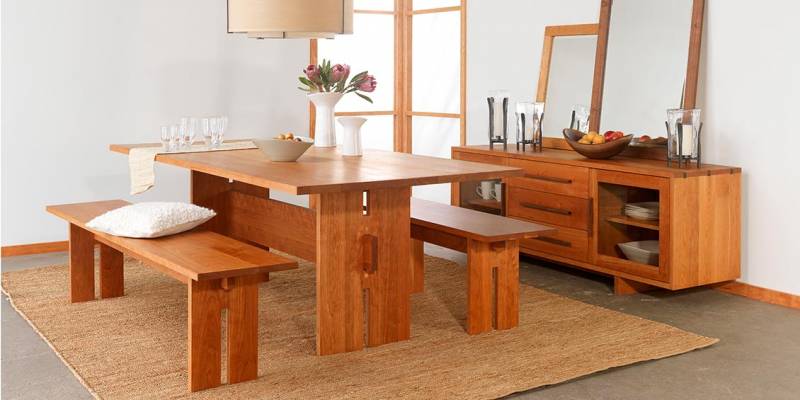Modern and contemporary are used interchangeably in most contexts—after all, even the dictionary lists them as synonyms—but when it comes to talking about furniture, architecture, and interior design, these two terms are not one and the same.
In most situations modern translates to “here and now”, but when discussing modern design and furniture, it is referring to various periods from the early to mid-twentieth century. Contemporary on the other hand is forever changing as it all about what is hot and trendy this decade.
Here is an easy way to remember the difference between modern and contemporary furniture: modern design will never change, while contemporary design is always being redefined.

| Modern Design | Contemporary Design |
|
|
The list above is a great comparison, but when trying to determine one design style from another, just remember that most people aren’t purists—the majority of interiors are crafted from a mix of design styles—which can make a specific style of design hard to identify.
What is Modern Design?
 Designed by husband and wife Charles and Ray Eames, the first Eames Lounge Chair was produced in 1946. It is an icon that is frequently seen in modern design.
Designed by husband and wife Charles and Ray Eames, the first Eames Lounge Chair was produced in 1946. It is an icon that is frequently seen in modern design.In the early 1900’s, modernism was the revolt against highly ornate design styles, such as Victorian, Renaissance, and Gothic. It traded busy designs for clean lines and a minimal aesthetic to eventually create modern design as we know it today.
Since the modern design era stretched through the early to mid-1900s, there are a few key decor styles that are housed under the “modern design” umbrella. Two of the biggest design movements that contribute to the modern design movement is Art Deco and Mid-Century Modern.
Art Deco Design Characteristics
Art Deco design came onto the scene in the 1920s, but it still remains a popular design style almost a century later.
- Offers subtle ornate designs with a sleek aesthetic
- Geometric shapes with hard angles
- Chrome, glass, and metallics are commonly used
- Uses pattern to make a statement
Mid-Century Modern Design Characteristics
 Copeland Astrid Cherry Bedroom Furniture
Copeland Astrid Cherry Bedroom FurnitureMid-Century Modern design was Influenced by Danish Modernism and Bauhaus. It peaked in the 1950s and 1960s—hence its name.
- Minimalist designs with a warm aesthetic
- Organic shapes often with softer curves and refined lines
- Wood is the most common material
- Uses neutrals and select bold colors as accents
- Utilizes the philosophy, “Form follows function.”
What is Post-Modernism? A Bridge Between Modern and Contemporary
Post-modernism ruled in the 1970s and 1980s, and it was unlike any design style that came before it. Although modern style is said to have paved the way for post-modernism, they are worlds apart.
For example, while Mid-Century Modern often strategically uses bold pops of color, post-modernism doesn’t bother. And the practicality of valuing function that modern design is so well-known for? Post-modernism takes the opposite approach.
Contemporary Design History
 Our contemporary craftsman dining table and buffet shown here with mission dining chairs shows contemporary design influence.
Our contemporary craftsman dining table and buffet shown here with mission dining chairs shows contemporary design influence.Now that you know contemporary and modern design are different, you may be surprised to learn that contemporary design stems from the modern design movement.
The term “contemporary” when referring to furniture and design popped onto the scene in the 1970s, but it didn’t actually become its own, defined style until later. When it first appeared, it was just borrowing an array of elements from other design styles.
Today contemporary design has many features that make it recognizable—clean lines, monochromatic color palettes, minimalist style— but it still loves borrowing a few elements from other styles’ playbooks every now and then. After all, contemporary is the forever changing chameleon of design, so there is bound to be some style overlap!
One design style is never “better” than another as the preference is purely personal taste. That is pretty much like asking if coffee is better than tea. You may favor a cup of coffee, but your neighbor could argue that hot tea is the best way to go. Your tea loving neighbor may think you’re crazy, but hey, we’ll come over for a cup of java anytime!


